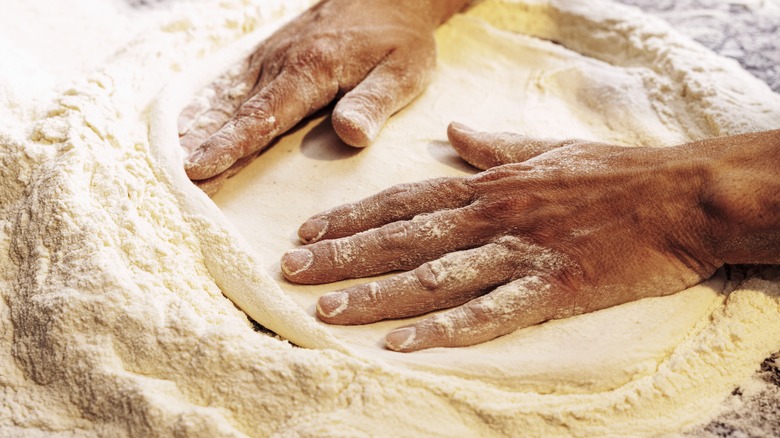Is Milk The Secret To Better Pizza Dough?
It doesn't get any more classic than a good old pizza. But enjoying pizza and making it at home are two very different things. For those who are keen to create their own variation at home, keep in mind that adding milk could give you better dough. Milk makes the gluten stronger and brown the pizza's crust; you can actually use it to replace all of the liquid in typical dough recipe. It also creates a richer texture and adds minerals like calcium. Just be mindful of scalding it first, destroying a rather pesky bunch of enzymes that would otherwise slow yeast growth.
You'll want to use between 5% and 8% more milk than the flour weight to see results. Anything less, and there isn't enough difference to justify the extra expense rather than just using water. You don't have to use it in liquid form, though — dry milk solids work just as well. And for vegans who drink milk alternatives, almond, soy, and oat milk still create a soft and creamy quality for your dough.
Other ways to vary your pizza recipes
With that variation under your belt, you can branch even further out. Did you know that beer makes a great liquid substitute in pizza dough recipes? Similarly, buttermilk is an excellent total replacement that strengthens the dough. Unusual extras like ginger, garlic, and nutmeg are useful to sprinkle into your mixing bowl to boost bolster the yeast too.
Even the foundations of the most traditional recipes can benefit from some shaking up occasionally. One of the biggest tools for adjusting the texture of your dough base is changing the flour type. All-purpose flour is fantastic for creating a crunch, while bread flour prompts a more noticeable rise and (hardly surprising) bread-like quality. For those on gluten-free diets, it's best to steer clear of imitative brands and instead use almond flour, which forms a thinner crust. Shake up the standard Neapolitan pizza recipe and personalize it to your preferences. Get creative, and you'll notice results like never before.

